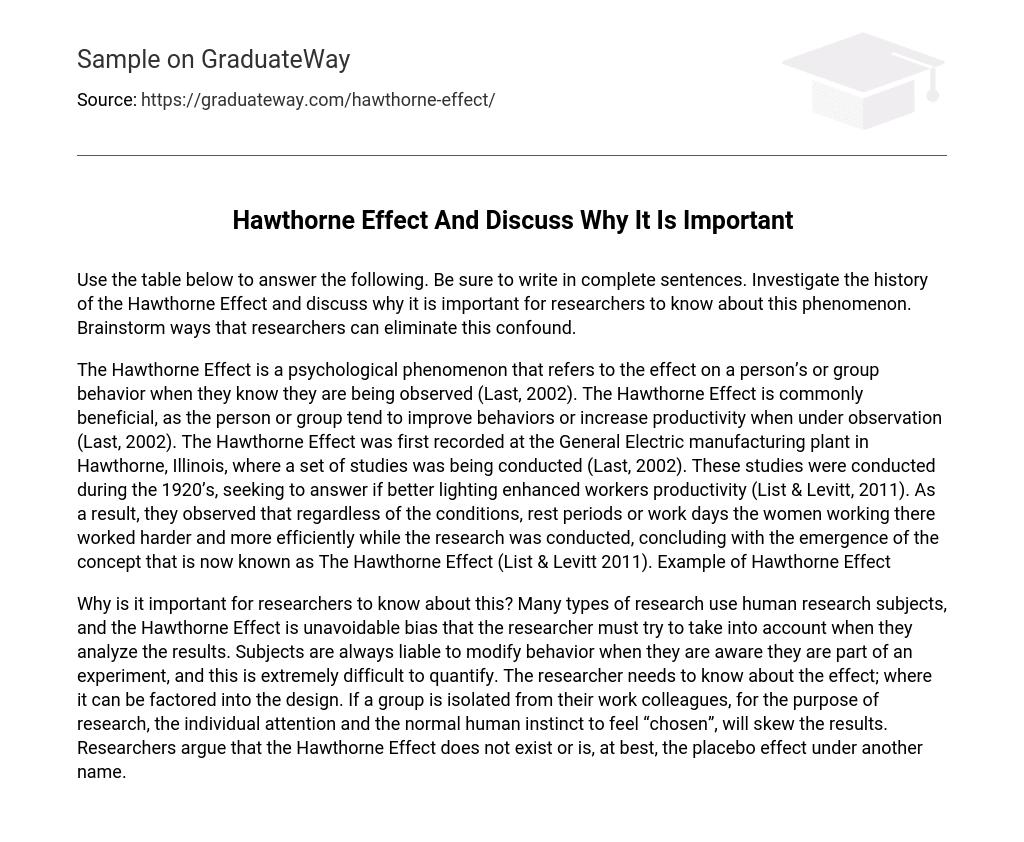Investigate the history of the Hawthorne Effect and explain its significance for researchers. Additionally, brainstorm methods that researchers can utilize to eliminate this confounding factor.
The Hawthorne Effect, a psychological phenomenon, occurs when a person or group changes their behavior due to being observed (Last, 2002). This effect is usually positive as it leads to improved behaviors and increased productivity (Last, 2002). The Hawthorne Effect was initially discovered during a set of studies at the General Electric manufacturing plant in Hawthorne, Illinois in the 1920s (Last, 2002). These studies aimed to determine if better lighting would enhance workers’ productivity (List & Levitt, 2011). The researchers found that regardless of various factors such as conditions, rest periods, or work days, the female workers in the plant worked harder and more efficiently during the study, giving rise to the concept now known as The Hawthorne Effect (List & Levitt 2011).
It is crucial for researchers to have knowledge about the Hawthorne Effect as it has implications in various types of research involving human subjects. This unavoidable bias occurs when subjects modify their behavior upon realizing their participation in an experiment, making it challenging to measure accurately. Researchers must consider this effect when analyzing results and incorporate it into the study design. For instance, if a group is isolated from their work colleagues for research purposes, the individual attention received and the human instinct of feeling “chosen” can influence the outcomes. Some researchers argue that the Hawthorne Effect is either non-existent or simply another form of the placebo effect.





